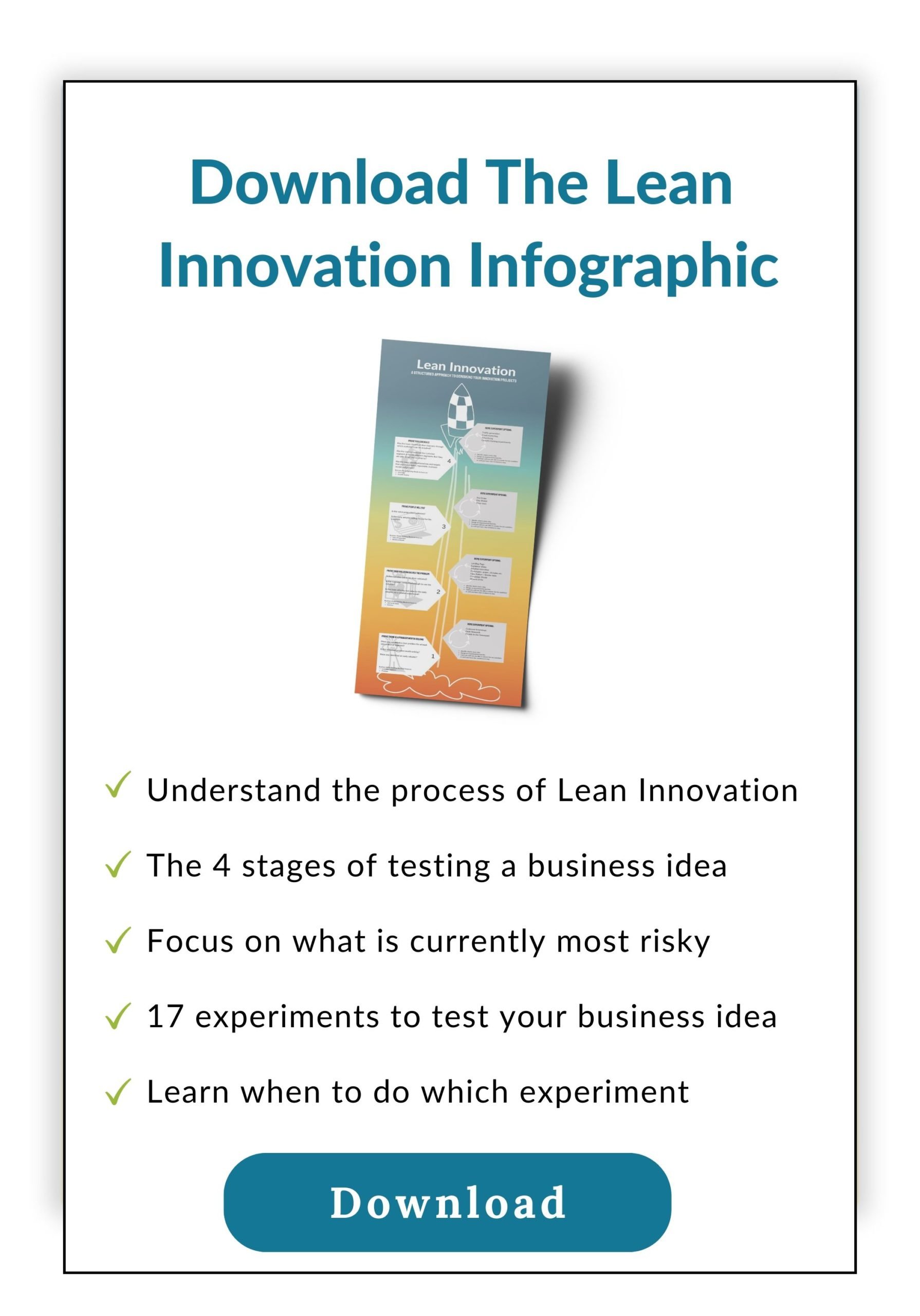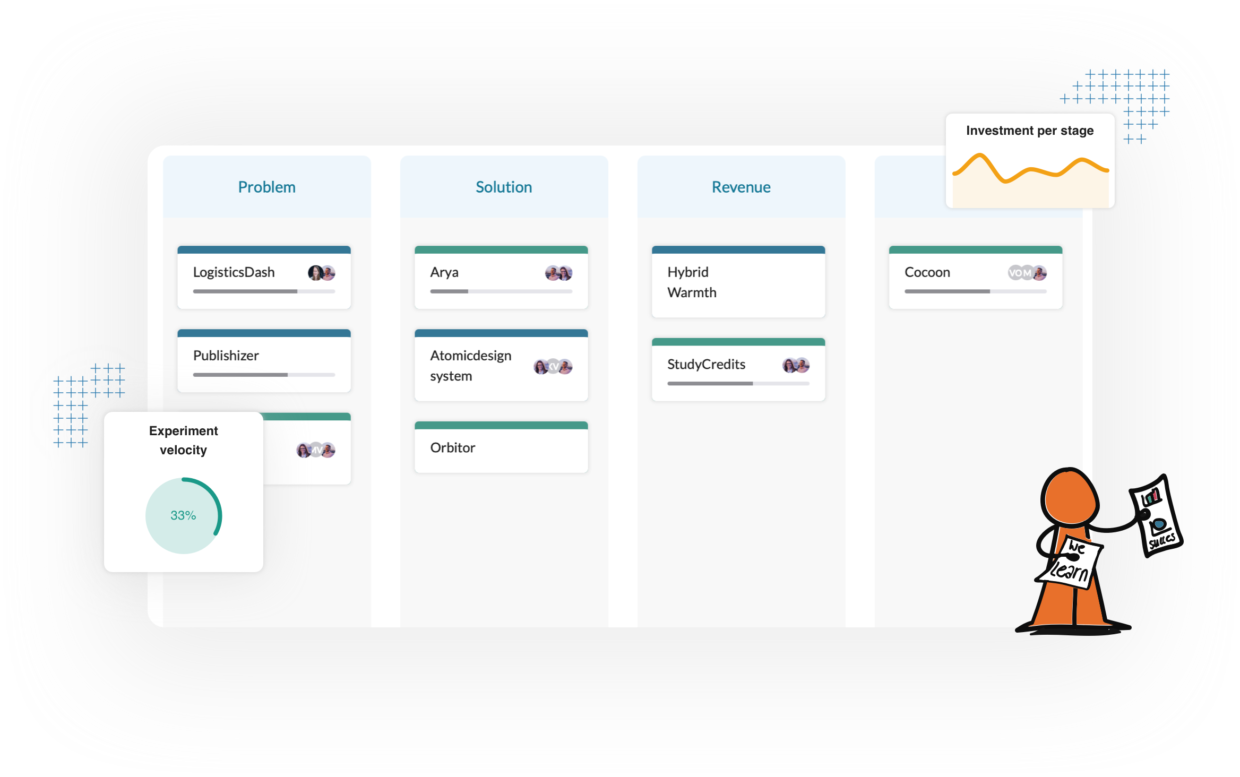How to do market research for your startup?
Table of Contents
Congratulations on your new business idea! Your first response might be to start working on your website or start building your solution right away, as the majority of people do. But don’t be like that! Instead, think about if you have evidence your customer actually wants your solution. Probably not. For any new startup idea, you should conduct market research first, this might sound time-consuming and exhausting, but it doesn’t have to be. In this blog, we explain how to get to know your market before building the product.

Get to know your market before building your startup
Before working on your solution, it is crucial to understand who your customers are and what problem you are solving for them. You might have ideas about it, but you should gather evidence to support that claim before continuing, this is the process of Lean Innovation. We have written out 18 experiments you can conduct to gather all the evidence you need.
How to start getting to know my customer?
Developing a new business idea involves a lot of risks because there are a lot of unknowns. It is hard to understand your customer, to know the exact problem you are solving, how you can solve it, and how much they are willing to pay you for it. That is why it is important to test some of these assumptions first in order to de-risk your startup idea before investing a lot of time and money.
Begin with desk research related to your startup’s market
Usually, you start with a bit of desk research. Start by searching for people that talk about the problem you are solving online. You might go to Twitter or LinkedIn. Reddit and online discussion forums are also excellent sources of information. Larger consultancy firms may have written reports on your topic that you can read. By doing desk research, you learn more about the envisioned target market, the problem your startup solves, and who it is solving it for.
What to look for at the beginning of your research
Especially understanding the type of customer you are targeting is important at this stage. When you are scaling you might target “everyone”, but at the beginning, it really helps if you focus on a small group of customers that experience the biggest pain from the problem. These customers are more willing to test new solutions that solve their problems and are more willing to pay for them.
The ideal customer:
- Knows they have a problem
- Is searching for a solution to that problem
- Uses “alternative solutions” to solve that problem
- Has a budget available to pay for solving that problem
You can identify customers by looking at their behavior. Demographics like age and sex are not really relevant at this stage, it is more important how they are behaving.
If you want to build an app for dads that work remotely from home, there is no use in targeting all men from 24 to 49. It makes way more sense to look at fathers (and only fathers?) that work a lot from home and experience pains by doing so.
Gather the first actual evidence
Once you identify the behavior of your customer, do some more desk research and try to find some of them online. Reach out to find out if they actually experience the pain points you think they experience. There is a big chance their problems are slightly different than you had imagined, and that is great! You have found your first evidence to de-risk your startup before you even started building.
Talk to your potential customers
The next step in understanding your startup’s market is talking to potential customers. Try to talk to at least 10 to 15 potential customers. Please don’t sell them your idea; ask them questions about their problems. You have spoken to enough customers once you don’t learn anything new.
With this new understanding of your customer’s problems and their behavior, have another look at the solution you had in mind. Does it still solve their problems or do you need to adjust your idea?
This process of de-risking your startup step by step is what we call Evidence-Driven Innovation. By asking yourself, “What don’t I know yet about my startup?” and “How can I test that?” you get into a mindset of business model validation where you gather evidence to support your claims before you start building. It helps you to prevent building a product nobody wants to use, by directly talking to the people you are solving a problem for.
[convertkit form=5116887]
Key takeaways
When you’ve got a new startup idea, your first reaction might be to start building the product/service right away, but that’s not what you should be doing. Instead, you need to find out if the customer you have in mind, is actually experiencing the problem you want to solve. You start doing this by conducting a desk research. Then you should start looking at potential customers, and reach out to them to find out if and how they experience the problem. Do these things first, and you will stop wasting time on business ideas that have no chance of succeeding. Once you know what your customer wants, you can start thinking about building solutions.
Would you like to hear more about doing market research for your startup in detail? We’ll explain it in detail in our upcoming Lean innovation training course.

Timan Rebel has over 20 years of experience as a startup founder and helps both independent and corporate startups find product/market fit. He has coached over 250+ startups in the past 12 years and is an expert in Lean Innovation and experiment design.

